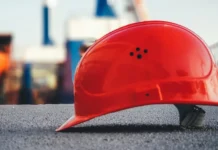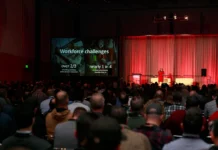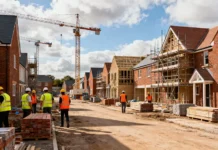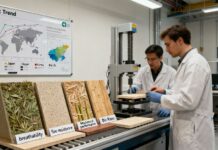Precision-manufactured housing can solve the shortfall in affordable homes. Jami Cresser-Brown, director of creative technologies at Bryden Wood, discusses a new app developed with the GLA and Cast Consultancy that harnesses location data to support its adoption
We know we need more homes. We need homes that are well built, the right size and where we’ll be safe, dry and warm. Homes that are genuinely affordable to rent or buy. As things stand, there just aren’t enough quality homes being built and the situation in London is particularly bad. This, sadly, is not news.
The good news, though, is that there are ways to bring the solution closer. PRiSM is our way, as you’ll see.
The Mayor of London’s 2017 manifesto stated we need 50,000 new homes a year. Since then, about 40,000 new homes have been built in London. Not enough, obviously. Of those, a little over a quarter have been ‘affordable’ housing, and the rest for private sale.
The full effects of Brexit and Covid-19 on the housing market are emerging but we can certainly say there will be more pressure on developers’ ability to build homes, through a shortage of labour. Likely new regulations about social distancing and other health and safety measures on building sites will also be detrimental.
So we need a way to build quality homes using fewer workers, in less time. Modern Methods of Construction, including precision-manufactured housing, provide that solution. At Bryden Wood, we’re working to make it as easy as possible for developers to adopt them.
Modern Methods of Construction
A number of methods are covered by the term “precision-manufactured housing” – platforms, panelised, volumetric. For all these methods, large elements of the building (walls, rooms, whole apartments) are manufactured away from the building site then assembled on site.
This means reduced time and labour, and no reduction in quality. In fact, just the opposite. Precision manufacturing means more consistency and higher standards. Elements are manufactured using repeatable processes in controlled factory conditions, not put together from scratch on dusty, muddy, congested and dangerous building sites.
Not everyone is ready to work with precision manufacturing. It represents a break from tradition. These modern methods are relatively new and have different properties, so they come with their own rules and designs have to work within those rules. This can be challenging, especially if you’re not sure which precision manufacturing method is best for your building. And this, in turn, means it’s complicated to assess the feasibility of projects.
PRiSM is an open-source web app that lets you design a range of housing types, including linear corridor blocks, deck access, mansion blocks and towers, with or without podiums and basements, all within the mayor of London’s rules on space. PRiSM is built on a geospatial map of London and contains a host of precise local data, from building heights to road widths to public transport amenities and even trees (true to life in both location and type).




























